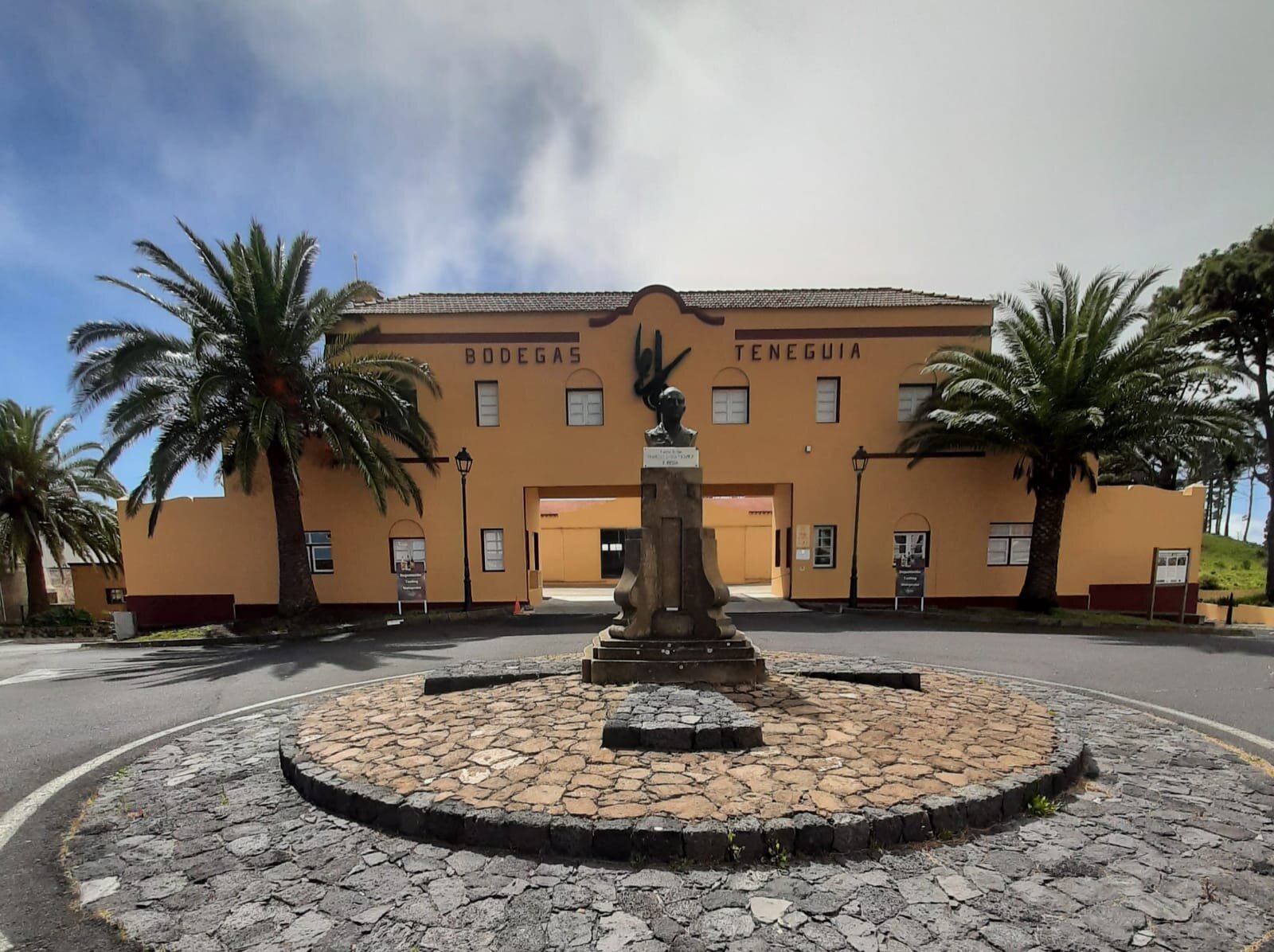Winetasting on La Palma
Bodegas Teneguia
On La Palma grapes are grown and also wine is produced. There are therefore a considerable number of larger and smaller vineyards and winemakers on the island. We visited Bodegas Teneguia for a guided tour about winemaking and we did a wine tasting. Read in this blog about our visit in which we were explained about wine production and tasted a few delicious wines.
On La Palma you can very well visit winemakers and vineyards and this is often combined with a tasting. Because our friend Thomas came to visit La Palma in March 2021 and he is a real wine lover, we postponed this activity during our stay until he was there. We had already selected Bodegas Teneguia in advance, we had already bought bottles of wine here. Then we had already had a chat with Diego Barrera, he organizes the tours and tastings for Bodegas Teneguia. He made a real positive impression and, moreover, Bodegas Teneguia was not too far from our accommodation.
Bodegas Teneguia is a winery in the village of Fuencaliente on the southern tip of La Palma with more than 70 years of history. It is one of the most famous and recommended wineries on La Palma and so they provide tours, tastings and of course they sell wines. At the time of our visit, there were 17 different wines available in the tasting room and store.
Due to the Covid situation, the activities were still scheduled by appointment in March 2021 and it was our turn on Monday March 15th. The group was small with a total of 7 people, including the three of us. The complete tour consists of a walk to one of the vineyards, a tour of the wine production and a wine tasting. The entire tour costs 10 euros per person and it is well worth it.
The walk is not far and certainly a fun part. From the winery, you walk around a small crater adjacent to it towards the vineyards that lie on the southwestern hills of the San Antonio Vulcano. The grapes from which especially the Malvasia wines are made grow at this location. The purpose of the walk is to get the picture of the hills where the grapes for these wines grow and an explanation about these grapes and wine.
Vineyard walk
During the walk Diego explains about the Malvasia and of course you taste this lovely natural sweet wine
The Malvasía is one of the pearls of Bodegas Teneguia, which is why it is an important part of the tour. Various grapes from the Los Llanos Negros area are used for this wine. These are the slopes of the San Antonio Vulcano and based on very low quslity production, this naturally sweet wine is made.
Due to the late harvest, the wine has a high sugar content and a balanced acidity. This is partly due to the fact that the grapes grow at a certain height on the sunniest hills of the island. The climate and conditions on the land are a perfect combination to produce a high quality production of these natural sweet wines. At the end of the walk and the explanation, the Malvasia is served for tasting. The Malvasia has a golden, amber and bright color and shows an unusual and harmonious aromatic complexity of fruity notes (according to our expert Thomas). We just liked it very much.
Bottling
The bottling and labeling is the last part of the wine production process
After tasting the Malvasia, Diego explains more about the general production of wine on La Palma. The nice thing is that he just improvises and draws the map of La Palma with a stick in the earth on the ground. In addition to the area in the south on the hills of the San Antonio Vulcano, La Palma produces grapes in the area of Mazo in the east and Garafia in the northwest. Most of the wines produced on La Palma are blends of the different grapes from the different regions. Various vineyards and wineries also cooperate in this.
After the walk we went inside and visited the rooms where the freshly harvested grapes are prepared for their transformation into wine. Then we visited the aging room where you can see the typical oak barrels in which the wine rests. At the end we walked through the bottling plant, this is the final stage of production where the wine is bottled and the bottles are labeled. Then we (finally) went to the tasting room to taste different wines.
Wine tasting
When we visited there were 17 different wines on the menu for tasting and buying
Of course there is more then enough time to taste the wines produced on the island of La Palma extensively. And Diego definitely has a beautiful story with every wine, so take the time to absorb these stories and enjoy the wines. You can taste all the wines and as mentioned there are 17 different wines on the menu ranging from traditional red, white and rose (Teneguia 'house wines') to some more special wines and editions such as Los Tabaqueros (white), the Mission's Grapes Listan Prieto (red) and the sweet red wine Zeus (that became Ella's favourite). We spent at least another hour in the tasting room and eventually we left the property with far too many tasty wines. But no winery visit is complete without an overpowering amount at checkout.
It's super fun, educational and recommended to visit Bodegas Teneguia when you are on La Palma, and take home some nice bottles (and drink them). And the fact that we could make Thomas happy with this activity made it even more fun.
For more photos and information about our visit to Bodegas Teneguia, check out our Instagram post and our Polarsteps page!
Ella & Geert.




